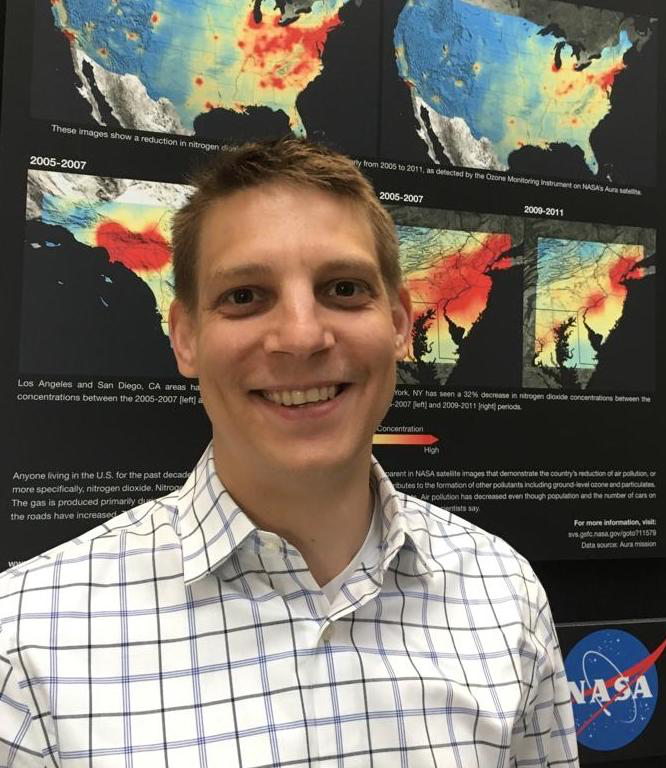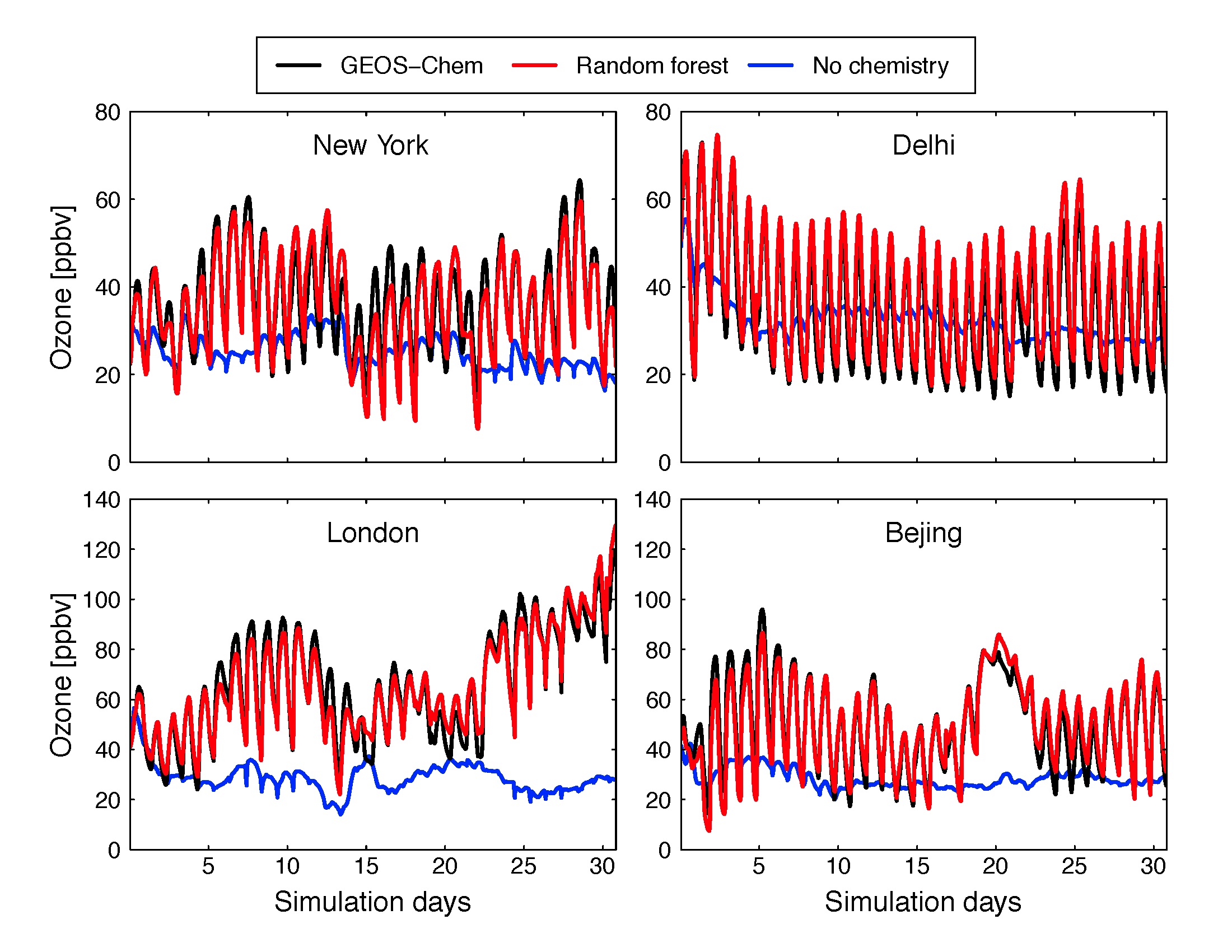ADAPT Accelerates Simulation of
Atmospheric Chemistry
Using Machine Learning (ML)
Atmospheric Chemistry
Using Machine Learning (ML)
Background
Air pollution is a global problem: more than 90% of all humans breath air that is unhealthy. This is why NASA scientists combine satellite observations and computer simulations of atmospheric chemistry to help understand the origins, quality, and extent of harmful air—using the compute resources of the NASA Center for Climate Simulation (NCCS).
Project Overview
Using the NCCS Discover supercomputer and Advanced Data Analytics Platform (ADAPT), this research focuses on simulating atmospheric chemistry and training a machine learning model to achieve a better understanding of global air pollution.
Above: This scientific visualization depicts the atmospheric chemistry produced by NASA’s GEOS Earth system model. Visualization by Greg Shirah, (lead) and Trent Schindler, NASA’s Scientific Visualization Studio.
Scientific Modeling
The Goddard Earth Observing System (GEOS) Model is a system of integrated computer models used for atmospheric data analysis, observing system modeling and design, climate and weather prediction, and basic research. NASA scientists are using GEOS to run more accurate, global simulations of atmospheric chemistry. NASA satellites observing air pollution or related quantities (e.g., wildfires) are critical to validating and improving the computer models, which leads towards achieving a better understanding of how air pollution forms and how to mitigate it.
The Challenge
One of the problems of studying atmospheric chemistry through computer modeling is that the process is computationally demanding and extremely slow, making it difficult for scientists to run global models at the high spatial resolution required for accurate air quality applications. The computational challenges also make it difficult to optimally incorporate all available observations—including NASA satellite data, aircraft observations, surface observations, and other data—into the computer model.
Scientists can spend a vast amount of their allotted compute time (50–90%) on the simulation of complex, dynamic atmospheric chemistry modeling. Adding detailed atmospheric chemistry to the NASA GEOS model makes the model four to eight times slower.
The Goal
The goal of this project was to replace the numerical simulation of atmospheric chemistry with a machine learning model using high-end computing resources to significantly speed up the modeling process.

The Solution
USRA scientist Christoph Keller and his colleagues from NASA Goddard Space Flight Center’s Global Modeling and Assimilation Office have developed a new method to simulate atmospheric chemistry using machine learning that has the potential to be at least two times faster than the conventional method. To do so, they trained a machine learning model using data from the NASA GEOS model with full chemistry to reproduce the chemical formation and destruction of air pollutants. Once trained, the machine learning model can then be inserted into existing air quality models to provide global air quality predictions at half the computational cost.

HPC Resources Used
Global simulation of air pollution at high spatial resolution is computationally expensive and requires a supercomputer such as Discover. For instance, simulating atmospheric chemistry at 25 km2 requires 3,416 CPUs on Discover, and it still takes approximately 6 hours to complete 10 calendar days of simulated atmospheric chemistry. These simulations produce large amounts of data, exceeding 1 terabyte per day. Additionally, Keller and colleagues used ADAPT to train the machine learning model. ADAPT is optimized for large-scale data analytics on Graphics Processing Units (GPUs), and its use accelerated the workflow by more than 50 times.
The Future
The new machine learning model will be used to better integrate NASA satellite observations into GEOS computer simulations of air quality in near real-time, with the aim to further improve the model forecasts.
Results And Impact
This finding demonstrates that machine learning is a promising tool to simulate atmospheric chemistry. The machine learning-enhanced GEOS model has a number of interesting applications, including making ensemble air quality predictions or better combining NASA observations and models. “Thanks to advances in computing, we can now simulate global air pollution at unprecedented scale,“ observed project scientist Christoph Keller. “Machine learning offers exciting new opportunities to simulate air pollution even faster and in ever greater detail.”
Related Links
Overview of the NASA GEOS composition forecast model, which produces global atmospheric composition forecasts in near real-time: https://gmao.gsfc.nasa.gov/weather_prediction/GEOS-CF/.
Sean Keefe, NASA Goddard Space Flight Center


